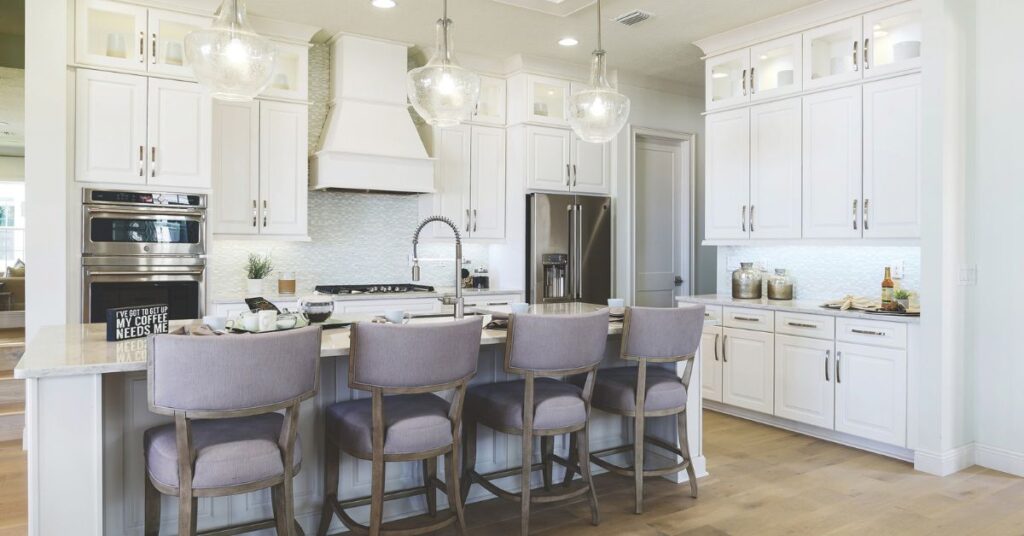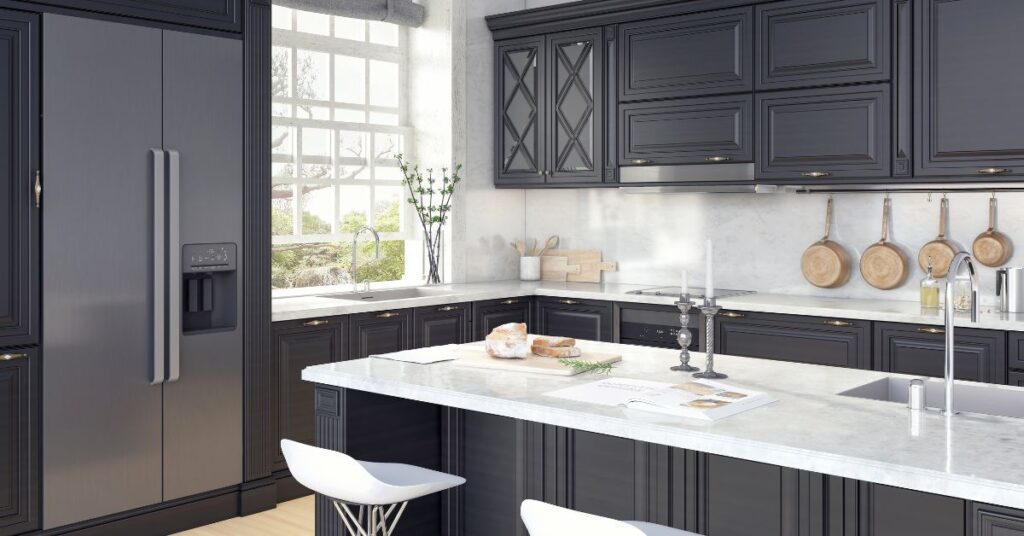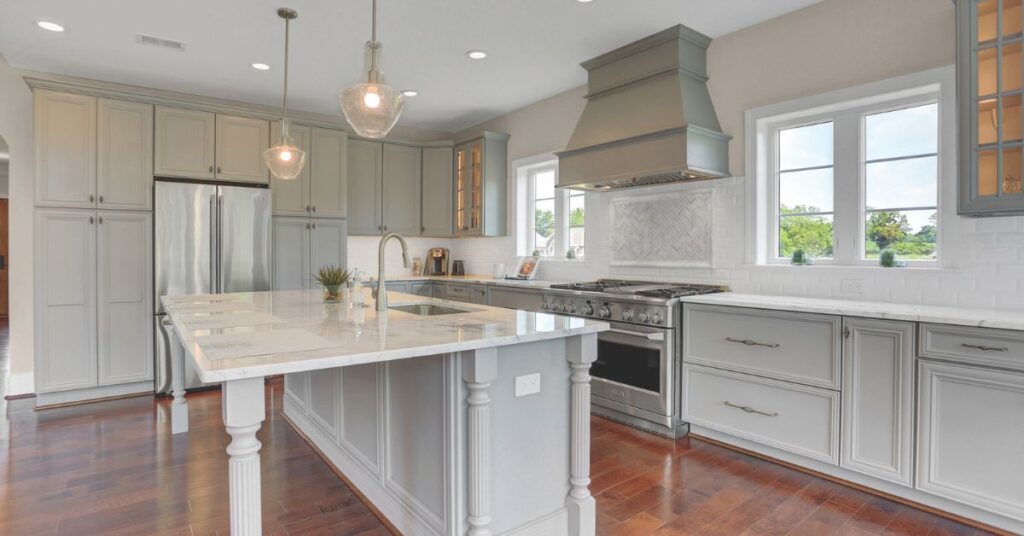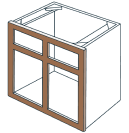Partial Overlay, Full Overlay, and Inset Cabinets, Explained

Cabinet overlay styles significantly affect both the appearance and functionality of your kitchen. Whether you’re planning a full kitchen renovation or simply updating your cabinetry, understanding the differences between partial overlay, full overlay, and inset cabinet designs will help you make an informed decision that aligns with your aesthetic preferences and budget considerations.
The term “overlay” refers to the arrangement of cabinet doors and drawers in relation to the cabinet frame. This seemingly small detail creates dramatic visual differences and affects the overall character of the kitchen space. Each style offers distinct advantages and considerations that can influence your final choice.
Understanding Partial Overlay Cabinets
Partial overlay cabinets feature doors and drawers that cover only a portion of the cabinet frame, typically leaving about an inch of the frame visible around the perimeter. This traditional style creates distinct lines between each cabinet opening, giving kitchens a more segmented appearance.
The visible frame creates natural separation between the cabinet doors and drawers, which many homeowners find visually appealing. This style works particularly well in traditional and transitional kitchen designs where defined boundaries between elements enhance the overall aesthetic.
Installation and Cost
The installation of partial overlay cabinets tends to be more straightforward than that of other styles, making them popular choices among contractors and DIY enthusiasts. The exposed frame provides clear reference points for proper alignment and spacing, reducing the precision required during installation.
Partial overlay cabinets generally cost less than full overlay or inset options because they require less precise manufacturing tolerances. The visible frame also means that minor imperfections in door alignment are less noticeable, making them more forgiving during installation and over time as the house settles.
Exploring Full Overlay Cabinet Design
Full overlay cabinets feature doors and drawers that completely cover the cabinet frame, with only a small gap between adjacent doors and drawers. This modern style creates a sleek, continuous appearance that works well with many contemporary kitchen designs. This style maximizes the visual impact of the chosen door material and finish, whether a painted surface, wood grain, or specialty material.
Full overlay doors can provide slightly more interior cabinet space compared to partial overlay designs. The larger door size also means fewer visible seams and gaps, resulting in a more unified appearance throughout the kitchen.
Full overlay cabinets require more precise manufacturing and installation than partial overlay styles. The doors must fit together with minimal gaps while allowing for proper operation, which demands higher-quality hinges and more accurate measurements during installation.

The Craftsmanship of Inset Cabinets
Inset cabinets are the most traditional and labor-intensive cabinet style, where the doors and drawers sit flush with the cabinet frame opening. This classic design requires exceptional precision in both manufacturing and installation, making it the premium option among cabinet styles.
The flush-mounted doors and drawers create extremely clean lines with the cabinet frame, producing an elegant, furniture-like appearance. This style particularly complements traditional, farmhouse, and Shaker kitchen designs, where craftsmanship details matter most.
Inset cabinets showcase the highest level of woodworking skill, as the frame and doors must be manufactured to exact specifications. Even minor variations in wood expansion or installation accuracy become immediately visible, requiring master-level craftsmanship throughout the process.
The precision required for inset cabinets extends to the selection of hardware as well. Special hinges designed specifically for inset applications are necessary, and these typically cost more than standard overlay hinges. The installation process also requires significantly more time and expertise.
Comparing Visual Impact and Style
Each overlay style features distinct visual effects that can dramatically alter your kitchen’s personality. Partial overlay cabinets offer a more traditional, segmented appearance that many homeowners associate with classic kitchen design. The visible frame creates natural visual breaks that can make large runs of cabinets feel less overwhelming.
Full overlay cabinets provide a modern, seamless appearance that emphasizes the door material and finish. This style works particularly well when you want your hardwood kitchen cabinets to make a bold statement without interruption from visible frames. The continuous surface creates a more contemporary aesthetic that appeals to current design trends.
Inset cabinets offer the most refined and elegant appearance, with their flush-mounted doors creating a furniture-quality finish. This style often appears in high-end kitchens, where traditional craftsmanship and attention to detail are paramount considerations.
Installation Considerations and Requirements
The complexity of installation varies significantly among these three cabinet styles. Partial overlay cabinets offer the most forgiving installation process, as the visible frame hides minor alignment issues and provides clear reference points for positioning.
Full overlay installations require more precision than partial overlay but remain manageable for experienced installers. Proper alignment becomes more critical, since gaps between doors should be minimal and are more noticeable when uneven.
Inset cabinet installation demands the highest skill level and precision. Every measurement must be exact, and any settling or movement in the house structure will become immediately apparent in the door and drawer alignment. Professional installation is strongly recommended for inset cabinets.
Cost Factors and Budget Planning
Budget considerations often play significant roles in determining the style of overlay. Partial overlay cabinets typically represent the most economical choice, as they require less precise manufacturing and simpler installation processes.
Full overlay cabinets generally cost more than partial overlay options due to increased precision requirements and larger door sizes. However, they remain more affordable than inset styles while still providing a modern, upscale appearance.
Inset cabinets command premium pricing due to the exceptional craftsmanship required in both manufacturing and installation. The specialized hardware and increased labor time contribute to higher overall project costs.

Making Your Decision
Choosing between partial overlay, full overlay, and inset cabinets options depends on multiple factors, including your design preferences, budget constraints, and desired level of craftsmanship. Consider your kitchen’s overall design style, as each overlay type complements different aesthetic approaches. You may also want to visit kitchen showrooms to see each style in person, as photographs often cannot fully convey the dimensional differences and visual impact of each option.
Your choice should also take into account your installer’s skill level and the quality standards you expect for your project. While all three styles can create beautiful kitchens, each requires different levels of expertise for optimal results.
Choosing the Right Style for Your Kitchen
Understanding these three cabinet overlay styles empowers you to make an informed decision that aligns with your vision, budget, and quality expectations. Each option offers distinct advantages and considerations that can significantly affect the final appearance and functionality of your kitchen.
Take the time to carefully evaluate your priorities and consult with kitchen design professionals who can provide guidance tailored to your specific situation. The right cabinet overlay style will serve your needs for many years while creating the kitchen environment you envision for your home.







